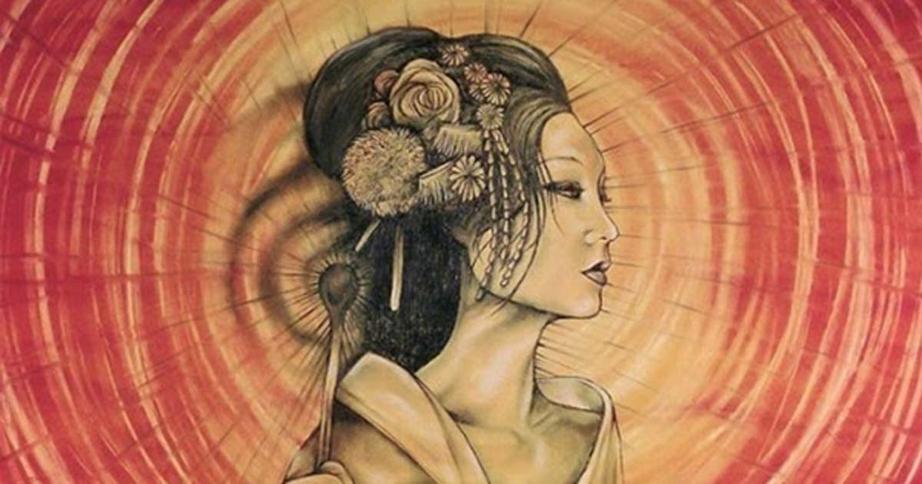Solar goddess Amaterasu, divine ancestor of the Japanese imperial family
Amaterasu is a major goddess in the Shinto religion. Although she is considered primarily to be a sun goddess, she is also believed to be the ruler of the Takama no Hara (the High Celestial Plain), which is the realm of the kami or spirits. This goddess has also been identified as the key ancestor for all Emperors of Japan.
The Japanese monarchy is regarded to be the oldest continuous hereditary monarchy in the world, with its roots extending all the way back to the 7th century BC. Like many other ancient monarchies, the Emperors of Japan trace their ancestry to a divine source, though it may be said that there are certain differences between the divinity of the Japanese Emperor and those of other rulers who claimed divinity.
According to Shinto religion, Amaterasu was the daughter of Izanagi and Izanami, two primordial deities who are believed to be responsible for the creation of the islands of Japan. Amaterasu was born when her father, Izanagi, escaped from the Underworld, following his failed attempt to rescue his dead wife. In the River Woto, Izanagi performed a purification ritual in order to cleanse himself. As the god was washing his left eye, Amaterasu was born.
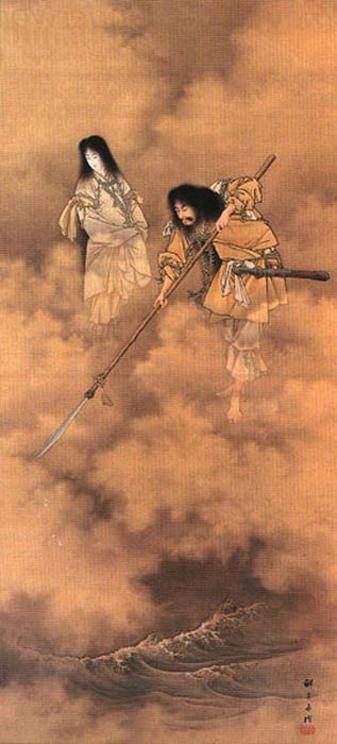 Kobayashi Eitaku, Izanagi and Izanami, c. 1885.
Kobayashi Eitaku, Izanagi and Izanami, c. 1885.
Amaterasu Retreats into a Cave
There are various myths about Amaterasu, the best-known of which is arguably the one in which the goddess blocked herself in a cave following a conflict with her younger brother, Susanoo, the god of the sea and storms. The latter was causing chaos on earth by destroying rice fields, uprooting trees, and even demolishing sacred buildings. Amaterasu’s patience reached its breaking point when her brother broke a hole in the roof of the hall where the goddess was sitting and watching the other gods weave the heavenly garments and he threw in the body of a huge flayed horse. Many of the weavers were hurt and some even died.
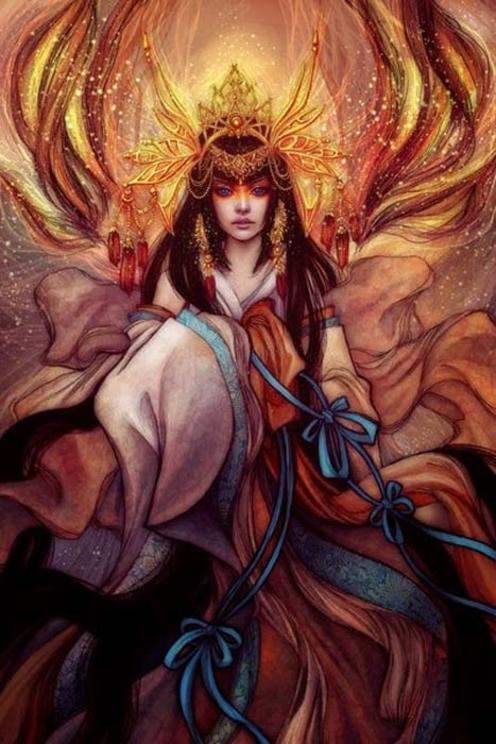 A modern depiction of Amaterasu.
A modern depiction of Amaterasu.
As a result of this act, Amaterasu decided to retreat into a cave in the center of the earth, known as Ama-no-Iwato (the Rock Cave), and refused to come out, thus plunging the world into total darkness. The other deities (800 in total) entreated the sun goddess to come out of the cave with no avail. Finally, it was through a ruse, by making the goddess think that they had found someone / something that could take her role in bringing light to the world. As Amaterasu opened the door of the cave slightly to see what was going on, she was seized, brought out, and prevented from going back into the cave.
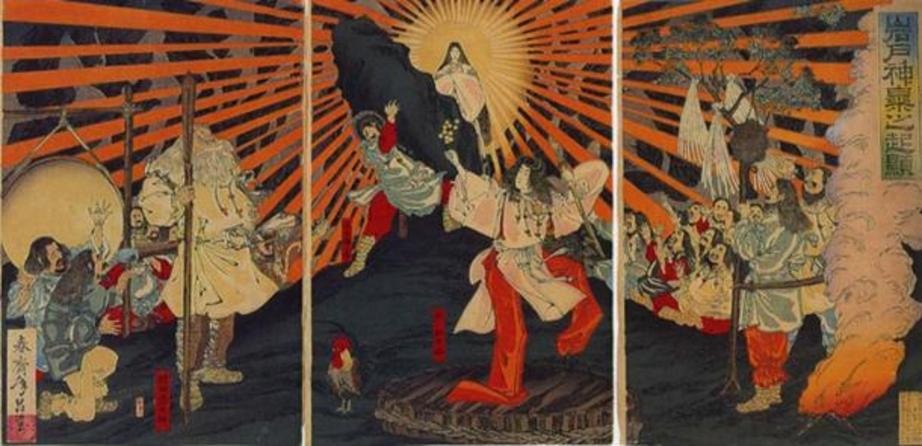 Amaterasu emerging from the cave.
Amaterasu emerging from the cave.
Amaterasu’s Relations
Amaterasu had a grandson by the name of Ninigi-no-Mikoto, who became the ruler of the terrestrial world, as his father, Ama-no-Oshiho-mimi, refused to take on that role when he was offered it by his mother. Amaterasu gave her grandson three magical gifts to help him with his task. These gifts were Yasakani, a jewel / pearls, Yata, a mirror, and Kusanagi, a sword; these items would become known as the imperial regalia of the Emperors of Japan.
It was Ninigi’s great-grandson, Jimmu, who became the first Emperor of Japan in 660 BC. In other words, the Emperors of Japan trace their ancestry all the way back to the goddess Amaterasu herself. Throughout the history of Japan, the emperors have been considered to be divine. Nevertheless, this did not mean that the emperor was a supernatural being. Instead, it meant that he was responsible for carrying out certain rituals to ensure that the kami would protect Japan, and maintain its prosperity. Moreover, the emperor had little political power for the greater part of Japanese history, until the Meiji Restoration.
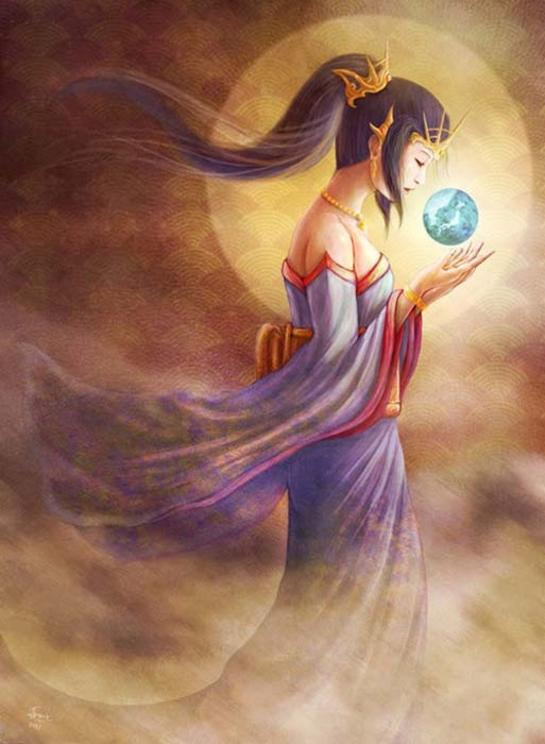 A modern depiction of Amaterasu.
A modern depiction of Amaterasu.
Following the defeat of Japan by the Allies during the Second World War, the Emperor Hirohito was forced to renounce his divinity. According to revisionists, however, the divine status of the emperor had not changed following the war - it was just a piece of propaganda by the victors in their attempt to sever the connection between the emperor and the Japanese people. In any case, few Japanese people still worship the emperor today - some are even of the opinion that the Emperor no longer has a function in the modern world.
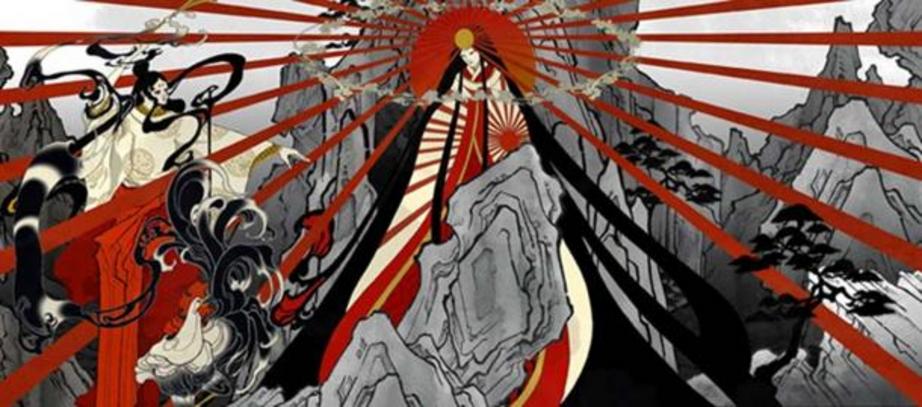 Painting of Amaterasu.
Painting of Amaterasu.
For full references please use source link below.

